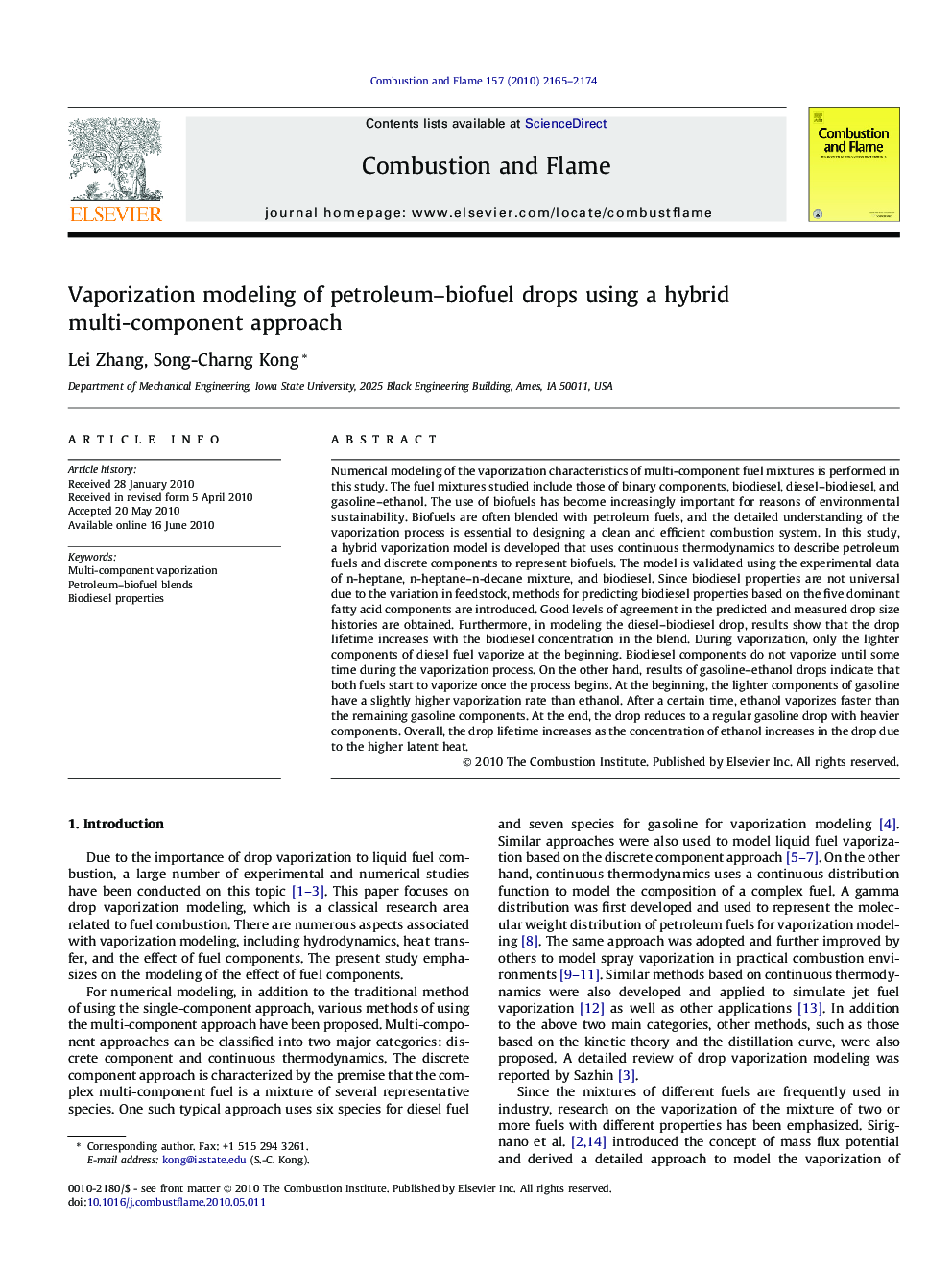| کد مقاله | کد نشریه | سال انتشار | مقاله انگلیسی | نسخه تمام متن |
|---|---|---|---|---|
| 166688 | 457803 | 2010 | 10 صفحه PDF | دانلود رایگان |

Numerical modeling of the vaporization characteristics of multi-component fuel mixtures is performed in this study. The fuel mixtures studied include those of binary components, biodiesel, diesel–biodiesel, and gasoline–ethanol. The use of biofuels has become increasingly important for reasons of environmental sustainability. Biofuels are often blended with petroleum fuels, and the detailed understanding of the vaporization process is essential to designing a clean and efficient combustion system. In this study, a hybrid vaporization model is developed that uses continuous thermodynamics to describe petroleum fuels and discrete components to represent biofuels. The model is validated using the experimental data of n-heptane, n-heptane–n-decane mixture, and biodiesel. Since biodiesel properties are not universal due to the variation in feedstock, methods for predicting biodiesel properties based on the five dominant fatty acid components are introduced. Good levels of agreement in the predicted and measured drop size histories are obtained. Furthermore, in modeling the diesel–biodiesel drop, results show that the drop lifetime increases with the biodiesel concentration in the blend. During vaporization, only the lighter components of diesel fuel vaporize at the beginning. Biodiesel components do not vaporize until some time during the vaporization process. On the other hand, results of gasoline–ethanol drops indicate that both fuels start to vaporize once the process begins. At the beginning, the lighter components of gasoline have a slightly higher vaporization rate than ethanol. After a certain time, ethanol vaporizes faster than the remaining gasoline components. At the end, the drop reduces to a regular gasoline drop with heavier components. Overall, the drop lifetime increases as the concentration of ethanol increases in the drop due to the higher latent heat.
Journal: Combustion and Flame - Volume 157, Issue 11, November 2010, Pages 2165–2174